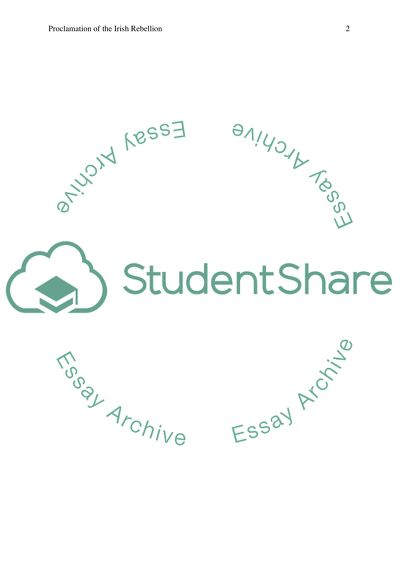Cite this document
(“Location Essay; Irish Rebellion/Proclamation of the Irish Republic Research Paper”, n.d.)
Location Essay; Irish Rebellion/Proclamation of the Irish Republic Research Paper. Retrieved from https://studentshare.org/history/1691580-location-essay-irish-rebellionproclamation-of-the-irish-republic
Location Essay; Irish Rebellion/Proclamation of the Irish Republic Research Paper. Retrieved from https://studentshare.org/history/1691580-location-essay-irish-rebellionproclamation-of-the-irish-republic
(Location Essay; Irish Rebellion/Proclamation of the Irish Republic Research Paper)
Location Essay; Irish Rebellion/Proclamation of the Irish Republic Research Paper. https://studentshare.org/history/1691580-location-essay-irish-rebellionproclamation-of-the-irish-republic.
Location Essay; Irish Rebellion/Proclamation of the Irish Republic Research Paper. https://studentshare.org/history/1691580-location-essay-irish-rebellionproclamation-of-the-irish-republic.
“Location Essay; Irish Rebellion/Proclamation of the Irish Republic Research Paper”, n.d. https://studentshare.org/history/1691580-location-essay-irish-rebellionproclamation-of-the-irish-republic.


